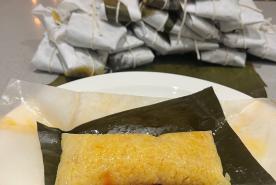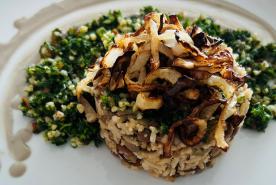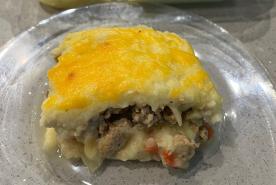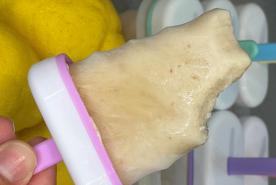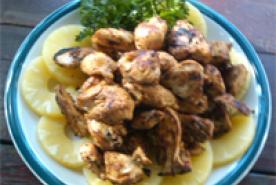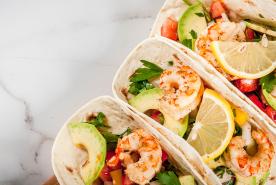August 12, 2014
 10 Simple Ways to Reduce Unhealthy Fat in Your Diet
10 Simple Ways to Reduce Unhealthy Fat in Your Diet
There are easy ways to decrease the overall amount of fat in your diet while still consuming heart healthy fats. The key is to make these substitutions in calculated ways so that you’re able to cut back on the unhealthy, saturated and trans fats without adding more overall fat and calories to your diet. The National Kidney Foundation gets you started with 10 simple ways to reduce unhealthy fat in your diet.
If you have chronic kidney disease or if you are on dialysis and need to limit certain foods in your diet, check with your doctor or dietitian before making any dietary changes. The information in this article is intended for those who want to protect their kidneys and those who are at risk for developing kidney disease, not those who already have kidney disease.
- Cut the cheese. Scale back on the quantity of cheese you eat while still maintaining flavor. If you use a sharper, more flavorful cheese you can usually use less of it, losing fat without losing flavor. Watch the sodium content of sharp cheeses or choose lower fat varieties.
- Choose light over dark. Incorporating more white meat into your diet instead of dark meat will help decrease the amount of saturated fat. If you prefer red meat, select leaner cuts of meat. Cuts that are lean or low in fat will still satisfy your craving for meat, without clogging your arteries. When eating poultry, skip the skin and you’ll scale back on even more saturated fat and cholesterol. Skinless chicken breasts contain less saturated fat and cholesterol than white meat chicken breasts with the skin.
- Make a simple swap. Instead of using butter, use a vegetable-based oil or non-hydrogenated heart healthy spread with liquid oil listed as the first ingredient. If you’re counting calories, oil-based cooking sprays can also help to coat the pan without ruining your diet. Like mayo on your sandwich? Spread avocado which contains heart healthy, unsaturated fats, or brown and yellow mustard which offer a flavor boost without the calories or fat contained in mayonnaise.
- Go meatless. Becoming a vegetarian isn’t for everyone, but giving up eating meat for 1-2 days a week can help you to cut back on the amount of fat in your diet. Going meatless doesn’t mean you need to eat like a rabbit either. There are many plant based protein sources that will satisfy your craving for a hearty meal. Beans, lentils and whole grains such as bulgur and quinoa are filling, high in protein and fiber, and low in fat. Try to make your favorite chili recipe meatless by adding beans and veggies.
- Read the nutrition label. Knowledge is power when it comes to making healthy choices and steering clear of unhealthy fats. Saturated fat is listed below the total fat on the nutrition label. Avoid products that have been labeled with the words “hydrogenated” and “partially hydrogenated” on the ingredient list. These are clues that the product contains trans fats. On a nutrition label, all ingredients are listed in order by weight. If an ingredient is listed first, second, or third on the label, it means there’s a larger amount of that ingredient in the product. For example, if the first ingredient listed is butter or an ingredient that includes the word “hydrogenated”, chances are this food item is high in fat or highly processed. These are signs to pass on this product or to consume it in moderation. It is important to read and understand nutrition fact labels so you can make healthy food choices. For people with diabetes, high blood pressure, or chronic kidney disease, food labels are an important tool that can help you decide if a product is a good fit for your meal plan. An easy rule of thumb for determining if a food is low-fat is checking that it doesn’t contain more than 3 grams of fat per 100 calories.
- Incorporate fish into your diet. It’s a high protein alternative to meat and can be baked or grilled quickly. Fish can be seasoned easily with herbs, spices and lemon or lime juice to create lots of flavor. While fish does contain some fat, these tend to be the heart healthy fatty acids, such as omega-3s. Certain types of fish, such as salmon, contain greater amounts of omega-3s. Low-sodium canned tuna is another great source of protein that is low in fat. Beware of the breading that often accompanies prepared fish – many frozen fish choices are breaded and contain fat even though the directions call for baking the fish rather than frying it. Check the nutrition labels and compare brands to see which ones are lower in saturated and trans fats.
- Ditch the donut and other fried foods. Fried foods and processed sweets often contain high levels of trans fats. Some examples of fried and processed foods to eliminate from your diet or to enjoy sparingly include donuts, biscuits, fried chicken, and French fries. Try to give your favorite comfort foods a makeover at home by baking them instead of frying them. Season cut up potatoes and sweet potatoes with salt-free spices, spray a baking sheet with cooking spray, drizzle some olive oil (watch your portions) and bake the potatoes until they are crispy. You can enjoy the essence of the French fries but you will have eliminated unhealthy fats in the process. Many restaurants and companies have already removed trans fats from their products. At a restaurant, don’t be afraid to speak up and ask how a dish is prepared and whether it contains trans or saturated fats.
- Bake. Don’t want to give up sweets entirely? Make your own baked goods and choose healthier ingredients. Using vegetable oil or unsweetened applesauce for some or all of the butter and margarine in a recipe can help to significantly reduce the amount of saturated fat and trans fat. You can still have your cake and eat it too – in moderation of course!
- Decrease the dairy fat. Whether reaching for a glass or the ice cream carton, compare options. Instead of using whole milk, try to incorporate reduced-fat (2% or 1%) or fat free milk (skim milk) into your diet. You’ll reduce the amount of calories and grams of fat in each serving of milk. Check out lower fat dairy dessert options such as frozen yogurt or low fat ice cream. Want to cut out dairy entirely? Sherbets and popsicles are great non-dairy alternatives if you’re craving something cold and sweet.
- Grab a handful of nuts. Instead of munching on chips which are often high in fat and sodium, for a crunchy treat, grab a handful of almonds, walnuts or peanuts. These are all good sources of unsaturated fats, as well as protein and fiber. Reach for the unsalted variety and you’ll satisfy your snack craving without the sodium that comes along with many savory foods.









